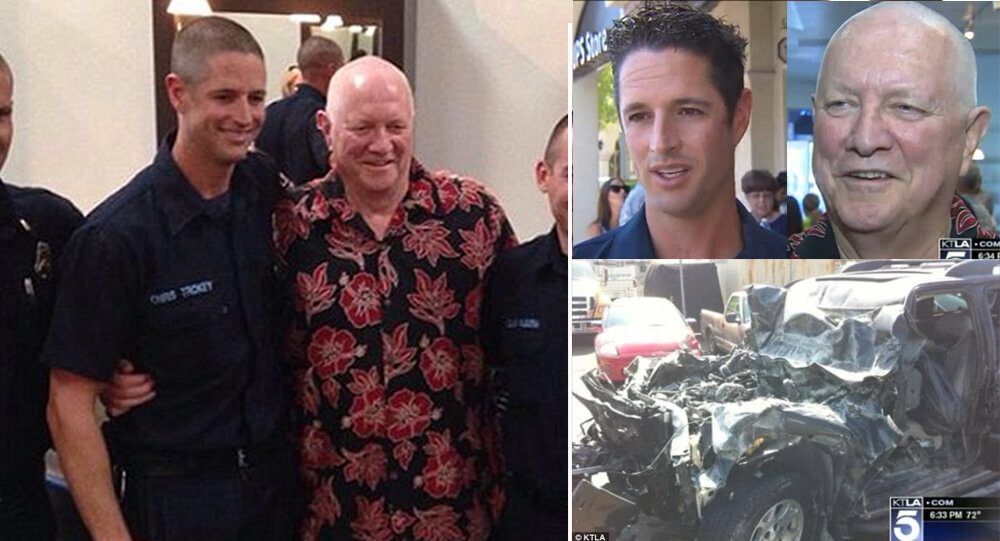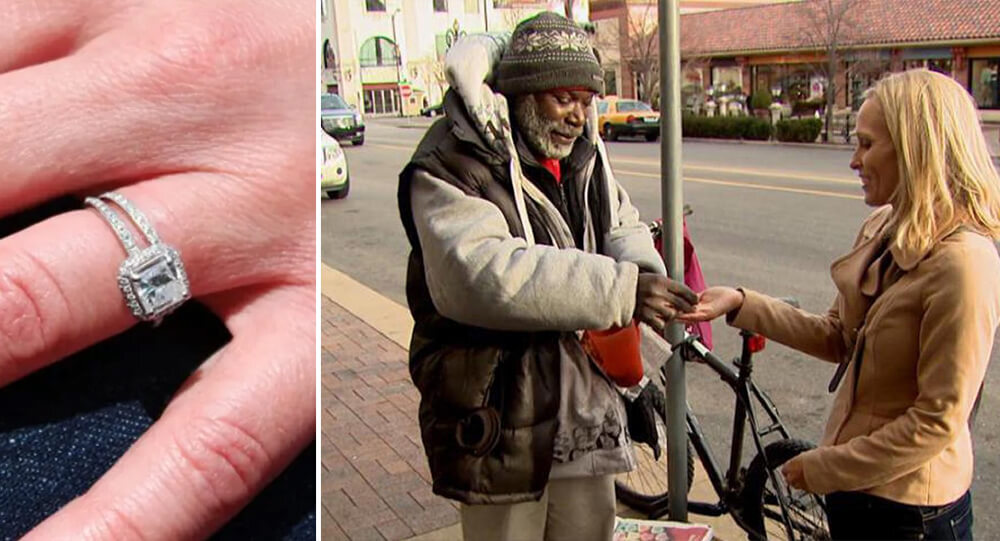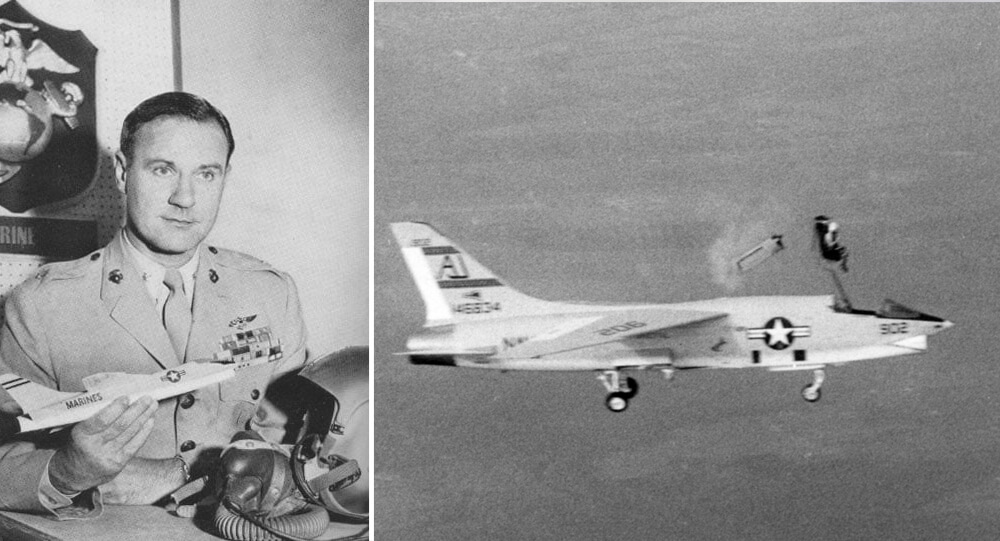
The story of William Rankin fall through a thunderstorm is one of impossible survival against incredible odds
Lieutenant Colonel William Rankin was a World War II and Korean War veteran who flew for the US Marine Corps. But he is best known for being the only person to date to have survived falling into and passing through a cumulonimbus storm cloud before reaching the ground. He survived a literal fall through a storm. Which, as far as leaving a lasting impression, places pretty highly on the awesome scale. This incredible act of survival was chronicled by Rankin in his book The Man Who Rode Thunder. Sadly, the book is no longer in print, and the few, extremely rare copies that are still available usually come with a hefty price tag.
On July 26, 1959, the thunder riding incident took place. From the Naval Air Station in South Weymouth, Massachusetts, to the Marine Corps Air Station in Beaufort, South Carolina, Rankin and his wingman Herbert Nolan were piloting two F-8 Crusaders. Rankin and Nolan had climbed to 47,000 feet (14,326 m) and were cruising at a brisk Mach 0.82 (roughly 624 mph) to keep above some nasty looking storm clouds that peaked somewhere around 45,000 feet (13,716 m). Rankin reported hearing an audible bump and rumble from the engine just before they began to descend. (This is conceivably one of the worst situations in which to begin experiencing alarming engine noises.)
The warning lights started flashing, and the engine abruptly stopped. Nolan received a brief message from Rankin that read, “Power failure. May have to eject.” He then pushed the lever to turn on the aircraft’s auxiliary power. The lever disintegrated in his hands. Rankin considered his options as the unpowered aircraft started to nose down significantly. He was aware of the numerous challenges presented by his extremely high altitude, including the freezing temperatures, severe decompression, and virtually nonexistent oxygen levels. And to make matters worse, Rankin was not donning a pressure suit. After determining that the aircraft could not be recovered, Rankin finally pulled the twin ejection handles at 6:00 PM and ejected into the atmosphere. 47,000 feet up. into air that was -58 °F (-50 °C) at the time. And as if those circumstances weren’t bad enough, Rankin’s left hand’s glove was ripped off during ejection, adding a nice, fresh slice of “insult to injury.” Rankin experienced immediate discomfort as a result of his abdomen painfully swelling as a result of the decompression, and blood oozing from his eyes, nose, ears, and mouth. He was able to breathe thanks to an emergency oxygen supply as he fell through the air.
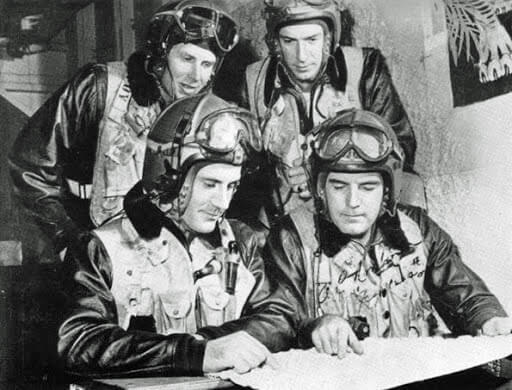
He reached the top of the thunderstorm after about ten seconds. Frostbite was added to Rankin’s growing list of issues by the bitter cold and choppy winds, especially on his bare left hand. The built-in barometer in Rankin’s parachute was programmed to open automatically when it reached an altitude deemed safe for breathing. Although Rankin could manually pull the rip cord to open his parachute, he was aware of the situation enough to restrain himself. He had little oxygen and it was cold; if the parachute opened while he was too high in the air, it might prolong his descent to the point where he experiences hypothermia or asphyxiation and dies. Under normal conditions, Rankin could anticipate taking three to four minutes to ascend to a breathable altitude of 10,000 feet. When that happened, his parachute would open, and he would continue to fall at a slower rate.
You may have noticed, though, that the normal conditions were now being smashed into tiny, tiny pieces by a large and raging thunderstorm.
William Rankin’s visibility was nearly impossible to see as he descended through the storm’s upper reaches. For what seemed like a very long time, Rankin fell. Long enough that he started to be concerned that his parachute’s automatic switch and barometric sensor were broken. Finally, the parachute opened, and he felt an upward tug on his harness. Rankin tugged on the risers to make sure the parachute had properly deployed and inflated even though he couldn’t see it above him.
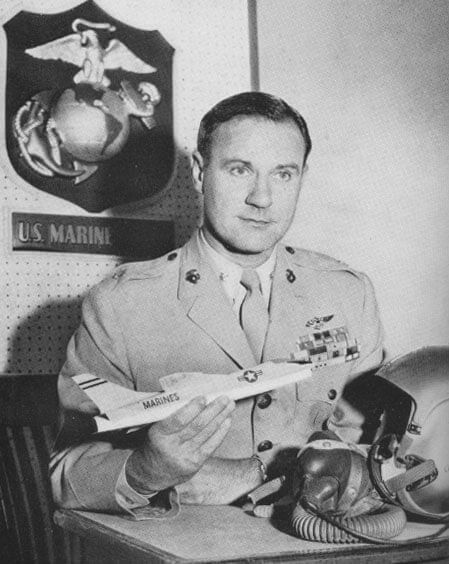
Sadly, Rankin wasn’t even close to 10,000 feet. The chaotic storm conditions had prematurely activated the barometric sensor and automatic switch, and strong updrafts within the thunderstorm had significantly slowed his descent. Rankin was even more vulnerable to the updrafts because the parachute had been deployed by this point. Before falling again, he was caught and pulled back thousands of feet into the air. This sequence was repeated so many times that Rankin lost track of the cost. He eventually misplaced his lunch as well. He remembers experiencing heaving and seasickness at one point.
Rankin was not alone in this up and down cycle, which is alarming. Alongside him, hailstones started to form, and he soon started getting hit by ice shards and balls. And even though that was bad enough, Rankin was concerned that eventually the ice would grow large enough to begin tearing his parachute. Amazingly, Rankin also had to deal with a different issue. In order to avoid inhaling mouthfuls of water and succumbing to the suddenly very real possibility of drowning in the sky, he frequently had to hold his breath and carefully choose when he attempted to breathe in air.
Lightning flashed all around Rankin as he precariously balanced all of these concerns. Rankin saw blue blades arcing around him that were several feet thick, and then instantly felt rather than heard concussive blasts of thunder. In the midst of all this confusion, Rankin briefly believed he had passed away when a lightning strike brilliantly lit up his parachute.
Rankin was finally freed from the updrafts’ hold as the storm’s ferocity mercifully began to lessen, and he began to descend. As Rankin left the thunderstorm behind and descended into a much gentler summer rainstorm, temperatures increased noticeably. Rankin was moving toward the backcountry forests of North Carolina while still alive and with his parachute still attached. He was about to touch down when the storm gave him one last poke, and the wind picked up, throwing him into a grove of trees. Rankin’s momentum caused him to crash into a tree trunk after his parachute became tangled in the trees’ branches. He was thankfully spared serious injury because his flight helmet absorbed the majority of the impact.
When Rankin descended from the tree, the time was 6:40, according to his wristwatch. He had just escaped a brutal 40-minute drop through a violent thunderstorm from a height of almost 9 miles.
In his search for assistance, Rankin eventually located a backcountry road. A passing car finally stopped and gave Rankin a ride to a store in the nearby town of Ahoskie, North Carolina, after several unsuccessful attempts to flag it down. From there, Rankin called an ambulance and was transported to the hospital, where he received decompression therapy, treatment for frostbite, and general beatings. Given that he had just finished ten rounds with a thunderstorm, his injuries were surprisingly minor, and he made a full recovery over a few weeks.
After writing The Man Who Rode Thunder and eventually reporting back to duty, William Rankin lived another 50 years. Twenty days before what would have been the 50th anniversary of his incredible fall, on July 6, 2009, he passed away. Lieutenant Colonel William Rankin is the only person in history to have survived falling through a storm, despite others, like paraglider Ewa Wisierska, having survived their own perilous encounters with them.

Water park in japan, ocean dome: Largest indoor water park in the world
The Seagaia Ocean Dome, located in Miyazaki, Japan, was the biggest indoor waterpark in the world. An "Ocean" six times the size of an Olympic pool, filled with 13,500 tons of unsalted, chlorinated water kept heated at 28 degrees Celsius and recognized as the largest simulated pool by the Guinness Book of World Records, measures 12,000 square meters of the sandy beach made from 600 tons of stone.

Baby Lynlee 'born twice' after life-saving tumour surgery
Baby Lynlee was "born twice." First, surgeons brought her out of the womb to remove a spinal tumor. After the successful surgery, she was placed back and born again as a healthy baby girl.

Hyperinflation of the Zimbabwe dollar turning phasing out their local money in 2015
Hyperinflation of the Zimbabwe dollar made it one of the lowest valued currencies in the world. So the country abandoned it in 2009, and switched to using foreign money. In 2015, to complete the process of phasing out their local money, the government offered to exchange it at a rate of one US dollar for 35 quadrillion Zimbabwean dollars.

Apple Watch saves a 78 year old man from life threatening fall
An Apple watch saved the life of a 78-year-old man from North Carolina. When the man was unconscious and collapsed on his driveway, his Apple watch quickly sent an alert to emergency services.

Drive-Thru Weddings in Las Vegas: The Ultimate Fast, Fun, and Legal Way to Say “I Do”
Inspired by fast food convenience, Las Vegas offers drive-thru weddings where couples can legally marry in under 5 minutes—without leaving their car. Some chapels even offer curbside Elvis impersonators and 24/7 ceremonies, complete with “to-go” marriage licenses.

Smart guy brings life-sized cutout of his late mother to his graduation
Even though that his mother passed away in 2016, a young man had a clever idea to make a life-size cutout of her and bring it to the event so that she could attend his graduation ceremony.

Paramedic Rescues Doctor Who Saved Him 30 Years Earlier
In 1981, a doctor helped save the life of a 3.2 pounds premature baby boy. Thirty years later, the boy, who had grown up to be a firefighter-paramedic, helped in saving the same doctor from a car accident.

Timothy Ray Brown, who inspired millions of HIV-positive people, died of leukemia
Timothy Ray Brown, also known as "The Berlin Patient," was the first person to be HIV-free. He was diagnosed with leukemia in 2006 and had a bone marrow transplant in 2007 as part of his treatment. The transplant helped him overcome the otherwise incurable disease thanks to the rare, HIV-resistant donor.

The fearless Annie Lee Cooper
Annie Lee Cooper was fired in 1963 after attempting to register to vote. She attempted it once more in 1965, but the sheriff ordered her to leave after prodding her in the neck with a club. She then punched him, causing him to fall to the ground. She was imprisoned before ultimately registering to vote. Following the passage of the Voting Rights Act, the sheriff was ousted and subsequently imprisoned for collaborating to transport drugs, but Annie Lee Cooper lived to reach 100 years old and bears her name to this day.

Toddler Calls 911 Accidentally and Saves Dad's Life
A father from Florida collapsed on the floor during a medical episode. Fortunately, his toddler son dialed 911 by accident and saved his life. An officer from the Hernando County Sheriff's Office arrived quickly and administered first aid before transporting him to a nearby hospital.

Why Is the N Lowercase in 7-Eleven?
7-ELEVEN is thought to have a lowercase "n" in its logo because the company president's wife believed that a logo with all caps would seem harsh, while a lowercase "n" would make it more graceful.

A man who was saved from committing suicide 16 years ago now assists people dealing with mental health issues
Kevin Berthia traveled to the Golden Gate Bridge in 2005 to commit suicide. He ended up spending 92 minutes on the edge of the bridge talking to officer Kevin Briggs about his life. In much better circumstances, they cross paths at the same bridge ten years later.

Woman had no idea she had an identical twin until she saw a 'lookalike' on YouTube
When Anais Bordier saw a YouTube video of Samantha Futerman, who looked exactly like her, she messaged her on Facebook and discovered they were both adopted and born on the same day. They were identical twins who had been separated at birth and had found each other by chance and on social media.

Whang-od Oggay, The legendary tattoo artist from the Philippines
This is Whang-od Oggay, a 106-year-old tattoo artist from the Philippines. She is often described as the last and oldest Kalinga tattoo artist, and has been performing the traditional art of hand-tapped tattoos since the age of 15

A U.S. Submarine Collides with a Japanese Fishing Ship in 2001
In 1998, 14-year-old Michael Crowe was charged with the murder of his sister. The police started targeting him after he seemed “distant and preoccupied” when his sister’s body was discovered, and during interrogation, police coercion led him to make a false confession. He was later declared factually innocent and the family won a lawsuit of $7.25 million in 2011.

The Terrifying Mount St. Helens Eruption is Captured by the Robert Landsburg Photographs
Robert Landsburg, a photographer who upon realisation that he is going to die in the mount St. Helens eruption of 1980 lay down on top if his equipment to preserve the photographs he had taken of the events. Landsburg‘s body was found 17 days later, buried in ash with his film intact.

'Press Your Luck' Was Hacked in 1984 by an Ice Cream Man
in 1984 an contestant made it onto the game show Press Your Luck. He discovered using his stop-motion VCR that the presumed random patterns of the game board were not random and memorized the sequences. On the game he was on, he won 45 consecutive spins. winning $110,237 in cash & prizes.

From Ocean Trash to Trendy Kicks: Adidas Sells 1 Million Eco-Friendly Shoes Made from Plastic Bottles
Adidas has sold over 1 million eco-friendly shoes made from ocean plastic. Each pair reuses the equivalent of 11 plastic bottles

Inspiring story of Emma Schols who Saved Her Six Kids From A Burning House
Emma Schols, a Swedish mother, saved all six of her children from a devastating house fire in 2019, running from room to room through flames while bleeding and losing skin. Against all odds, she survived with severe burns covering 90% of her body.

World's largest iceberg breaks off Antarctica
In 1986, the iceberg known as A23a broke away from the Antarctic coast. However, it quickly grounded in the Weddell Sea, effectively turning into an ice island.

Billy Ray Harris: A Story of Kindness and Honesty
In 2013, a homeless man named Billy Ray Harris discovered a $4,000 engagement ring in this cup. A woman had dropped while giving him some change. He returned the ring to her two days later. To thank him for his honesty, she set up a fund with the goal of raising $4,000 for him. It earned more than $185,000.

Estonians save a wolf from the ice by mistaking it for a dog
Two young construction workers in Estonia discovered what they thought was a dog caught in a frozen lake. They carried it to their car and brought him to an animal shelter, not realizing it was a wolf.

The accidentally discovery of Riace bronzes
Stefano Mariottini was snorkeling off the coast of Monasterace near Riace in 1972 when he noticed a human hand sticking out of the sand and called the police, thinking it was a corpse. It was actually two statues of "Warriors from Riace" - 5th century BC Greek bronze statues.

Unique Dining table with a hole for your cat to peek and join you dinner.
Dinos, a Japanese internet shop, has launched a new range of cat furniture, which includes this oak table with a hole in the middle and a perch underneath. It places your cat companion in the center of the table, making your cat the main focus of your meal, as it should be, because cats are the true proprietors of “your” home.

Couple reunites after 60 years apart
A Russian couple were reunited after being separated for 60 years. They were married for 3 days when the husband left to join the Red Army. They were unable to find each other until 60 years later when they randomly visited their hometown on the same day.






